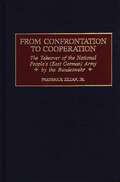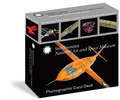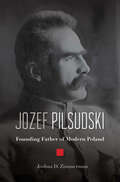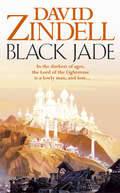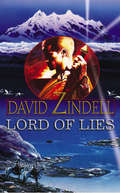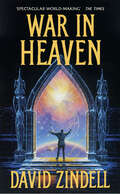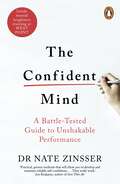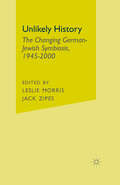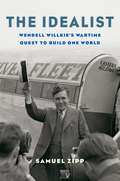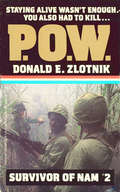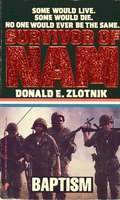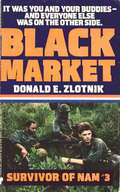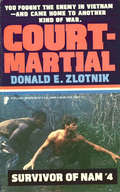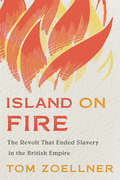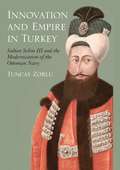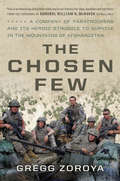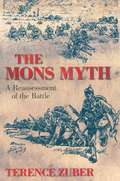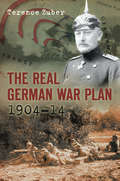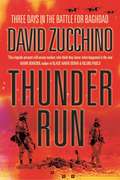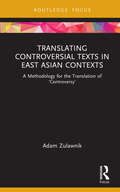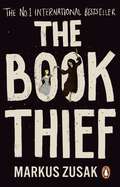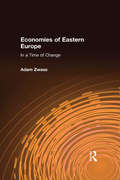- Table View
- List View
From Confrontation to Cooperation: The Takeover of the National People's (East German) Army by the Bundeswehr (Praeger Studies in Diplomacy and Strategic Thought)
by Frederick ZilianAt midnight on October 2, 1990, the West German armed forces took over the approximately 90,000 men comprising the National People's (East German) Army (NVA) and assumed control of its substantial arsenal. This study is an analysis of that unification from its beginning in July 1990 to the end of summer of 1993 when all applications for future service of former NVA officers and non-commissioned officers had been processed. Using numerous un-published sources and interviews, the author addresses the following areas: the organization used by the Bundeswehr and the political control exerted in the Takeover, the key decisions reached and the explanation of these decisions, the relationship of the Takeover to the new Army Structure 5 being implemented at the time, and the effect of the Takeover on the Bundeswehr's operational readiness, especially its ability to perform its new tasks identified in the spring 1991.The first scholarly study of the Takeover, this study focuses on 11 key decisions, made not only for military reasons, but also for political, economic, social, and psychological purposes. Overall, the Takeover was a success in light of the numerous goals it achieved while avoiding the outbreak of violence. The Bundeswehr achieved this success mainly because it relied on liberal democratic principles, including those comprising the unique German concept of Innere F^Duhrung (civic education and moral leadership). This book also provides an overall evaluation of the Takeover and contributes to theory-building on army amalgamations.
Smithsonian National Air and Space Museum Photographic Card Deck: 100 Treasures from the World's Largest Collection of Air and Spacecraft
by Dwight Jon ZimmermanCreated in partnership with the world-renowned Smithsonian National Air and Space Museum, this beautifully packaged, informative card deck captures, in words and stunning photographs, 100 of the museum's most important artifacts. The NASM is the world's largest, most-visited collection of historical aircraft and spacecraft, and commemorate major milestones in flight and space exploration. The 100 treasures in this deck, hand-selected by the curators, include the Spirit of St. Louis, flown by Charles Lindbergh on the first non-stop transatlantic flight; Chuck Yeager's Bell X-1, in which he broke the sound barrier; Buzz Aldrin's space suit, worn during the Apollo 11 mission, and the Space Shuttle Discovery, which flew 39 missions and spent 365 days in space. Each card includes a photograph of the object on the front and a 200-word description plus key data on the back.
Jozef Pilsudski: Founding Father of Modern Poland
by Joshua D. ZimmermanThe story of the enigmatic Jozef Pilsudski, the founding father of modern Poland: a brilliant military leader and high-minded statesman who betrayed his own democratic vision by seizing power in a military coup. In the story of modern Poland, no one stands taller than Jozef Pilsudski. From the age of sixteen he devoted his life to reestablishing the Polish state that had ceased to exist in 1795. Ahead of World War I, he created a clandestine military corps to fight Russia, which held most Polish territory. After the war, his dream of an independent Poland realized, he took the helm of its newly democratic political order. When he died in 1935, he was buried alongside Polish kings. Yet Pilsudski was a complicated figure. Passionately devoted to the idea of democracy, he ceded power on constitutional terms, only to retake it a few years later in a coup when he believed his opponents aimed to dismantle the democratic system. Joshua Zimmerman’s authoritative biography examines a national hero in the thick of a changing Europe, and the legacy that still divides supporters and detractors. The Poland that Pilsudski envisioned was modern, democratic, and pluralistic. Domestically, he championed equality for Jews. Internationally, he positioned Poland as a bulwark against Bolshevism. But in 1926 he seized power violently, then ruled as a strongman for nearly a decade, imprisoning opponents and eroding legislative power. In Zimmerman’s telling, Pilsudski’s faith in the young democracy was shattered after its first elected president was assassinated. Unnerved by Poles brutally turning on one another, the father of the nation came to doubt his fellow citizens’ democratic commitments and thereby betrayed his own. It is a legacy that dogs today’s Poland, caught on the tortured edge between self-government and authoritarianism.
Black Jade: Book Three Of The Ea Cycle (The Ea Cycle #3)
by David ZindellThe third book in the Ea Cycle, BLACK JADE is as rich as Tolkien and as magical as the Arthurian myths
Lord of Lies: Book Two Of The Ea Cycle (The Ea Cycle #2)
by David ZindellDeath and destruction surround the Lightstone in the second book of this magnificent and deeply moving fantasy epic.
War in Heaven (Requiem Of Homo Sapiens Ser. #04)
by David ZindellA triumphant close to The Requiem for Homo Sapiens – an epic tour de force that began with The Broken God and was followed by The Wild.
A People's History of the United States: 1492-present (P. S. Series #1)
by Howard ZinnAs seen in the award-winning feature film, Lady Bird.There is an underside to every age about which history does not often speak, because history is written from records left by the privileged.A classic since its original landmark publication in 1980, Howard Zinn's A People's History of the United States is the first scholarly work to tell America's story from the bottom up-from the point of view.Howard Zinn relays history in the words of America's women, factory workers, African Americans, Native Americans, working poor, and immigrant labourers. From Columbus to the Revolution to slavery and the Civil War – from World War II to the election of George W. Bush and the "War on Terror" – A People's History of the United States is an important and necessary contribution to a complete and balanced understanding of American history.
The Confident Mind: A Battle-Tested Guide to Unshakable Performance
by Nathaniel ZinsserYou don't have to be born confident. You can learn to be confident. Here's how.Dr Nate Zinsser works with the cream of the US military to prepare them mentally for leadership and for action. He also trains top sportsmen and women to develop the self-belief essential for world-class performance. Now he shares the tried and tested techniques he has perfected over many years to help anyone who wants to acquire the confidence that will enable them to perform at their very best, whatever the environment, however stressful the situation. In the process he shows how to make positive use of nervousness, what acquiring a 'success cycle' involves, and why self-assurance, like all skills, requires constant practice.Drawing on the latest research, and packed with real-life examples, this is a supremely practical - and inspirational - guide to achieving bullet-proof confidence.
Unlikely History: The Changing German-Jewish Symbiosis,1945-2000
by J. Zipes L. MorrisIn the English-speaking world, it is generally believed that there are very few Jews living and thriving in Germany. Yet, there has been an unlikely postwar history 1945-2001 that has been somewhat repressed in North America and the United Kingdom. While most people are well-informed about the Holocaust and the consequences that this tragic event has had for the world, very few people know that there has been a steady increase in the population of Jews in Germany since 1945 and that there is a flourishing 'Jewish' culture, certainly a relatively strong Jewish presence, in Germany today. Does this development mean that Jews are playing a significant role in German social life? Does this mean that the great German-Jewish relationship, often referred to as a kind of symbiosis, has re-emerged despite the odds against it? The sixteen essays in this book written by the leading critics in the field cover the fascinating changes that have been made in German society since 1945 in the Jewish communities, literature, theater, film, architecture, and other areas of interest including an examination of the resurgence of anti-Semitism in Austria. For anyone interested in reading about the unpredictable transformations in German-Jewish relations since 1945, Unlikely History will provide information and insights into a history that needs to be told to bring about greater understanding of Jews and Germans in contemporary Germany.
The Idealist: Wendell Willkie’s Wartime Quest to Build One World
by Samuel Zipp“The Idealist is a powerful book, gorgeously written and consistently insightful. Samuel Zipp uses the 1942 world tour of Wendell Willkie to examine American attitudes toward internationalism, decolonization, and race in the febrile atmosphere of the world’s first truly global conflict.” —Andrew Preston, author of Sword of the Spirit, Shield of Faith A dramatic account of the plane journey undertaken by businessman-turned-maverick-internationalist Wendell Willkie to rally US allies to the war effort. Willkie’s tour of a planet shrunk by aviation and war inspired him to challenge Americans to fight a rising tide of nationalism at home. In August 1942, as the threat of fascism swept the world, a charismatic Republican presidential contender boarded the Gulliver at Mitchel Airfield for a seven-week journey around the world. Wendell Willkie covered 31,000 miles as President Roosevelt’s unofficial envoy. He visited the battlefront in North Africa with General Montgomery, debated a frosty de Gaulle in Beirut, almost failed to deliver a letter to Stalin in Moscow, and allowed himself to be seduced by Chiang Kai-shek in China. Through it all, he was struck by the insistent demands for freedom across the world. In One World, the runaway bestseller he published on his return, Willkie challenged Americans to resist the “America first” doctrine espoused by the war’s domestic opponents and warned of the dangers of “narrow nationalism.” He urged his fellow citizens to end colonialism and embrace “equality of opportunity for every race and every nation.” With his radio broadcasts regularly drawing over 30 million listeners, he was able to reach Americans directly in their homes. His call for a more equitable and interconnected world electrified the nation, until he was silenced abruptly by a series of heart attacks in 1944. With his death, America lost its most effective globalist, the man FDR referred to as “Private Citizen Number One.” At a time when “America first” is again a rallying cry, Willkie’s message is at once chastening and inspiring, a reminder that “one world” is more than a matter of supply chains and economics, and that racism and nationalism have long been intertwined.
Survivor of Nam: P. O. W. (Survivor of Nam #2)
by Donald E. ZlotnikThe second exciting book in this authentic series about Vietnam involves a 17-year-old corporal who is imprisoned by the Viet Cong and must endure the horrors of his capture until the U.S. Special Forces can rescue him. A super-heroic series, focusing on the grim realities of war.
Survivor of Nam: Baptism - Book #1 (Survivor of Nam #1)
by Donald E. ZlotnikPrivate David Woods, newly arrived in Vietnam, faces his first bloody firefight and a deadly mission into Laos. Book 1 of Survivor of Nam.
Survivor of Nam: Black Market - Book #3 (Survivor of Nam #3)
by Donald E. ZlotnikBook 3 of this exciting Vietnam adventure series involves the military Black Market, where everything is for sale: contraband military supplies, drugs, booze, and even women. Now the time has come for the payoffs to stop and this chapter of the Black Market to be closed down for good.
Survivor of Nam: Court Martial - Book #4 (Survivor of Nam #4)
by Donald E. ZlotnikYou fought the enemy in Vietnam--and came home to another kind of war. Book 4 of Survivor of Nam by Donald E. Zlotnik.
Island on Fire: The Revolt That Ended Slavery in the British Empire
by Tom ZoellnerFrom a New York Times bestselling author, a gripping account of the slave rebellion that led to the abolition of slavery in the British Empire. For five horrific weeks after Christmas in 1831, Jamaica was convulsed by an uprising of its enslaved people. What started as a peaceful labor strike quickly turned into a full-blown revolt, leaving hundreds of plantation houses in smoking ruins. By the time British troops had put down the rebels, more than a thousand Jamaicans lay dead from summary executions and extrajudicial murder. While the rebels lost their military gamble, their sacrifice accelerated the larger struggle for freedom in the British Atlantic. The daring and suffering of the Jamaicans galvanized public opinion throughout the empire, triggering a decisive turn against slavery. For centuries bondage had fed Britain’s appetite for sugar. Within two years of the Christmas rebellion, slavery was formally abolished. Island on Fire is a dramatic day-by-day account of this transformative uprising. A skillful storyteller, Tom Zoellner goes back to the primary sources to tell the intimate story of the men and women who rose up and tasted liberty for a few brief weeks. He provides the first full portrait of the rebellion's enigmatic leader, Samuel Sharpe, and gives us a poignant glimpse of the struggles and dreams of the many Jamaicans who died for liberty.
Innovation and Empire in Turkey: Sultan Selim III and the Modernisation of the Ottoman Navy
by Tuncay ZorluOttoman naval technology underwent a transformation under the rule of Sultan Selim III. New types of sailing warships such as two- and three-decked galleons, frigates and corvettes began to dominate the Ottoman fleet, rendering the galley-type oared ships obsolete. This period saw technological innovations such as the adoption of the systematic copper sheathing of the hulls and bottoms of Ottoman warships from 1792-93 onwards and the construction of the first dry dock in the Golden Horn.The changing face of the Ottoman Navy was facilitated by the influence of the British, Swedish and French in modernising both the shipbuilding sector and the conduct of naval warfare. Through such measures as training Ottoman shipbuilders, heavy reliance on help from foreign powers gave way to a new trajectory of modernization. Using this evidence Zorlu argues that although the Ottoman Empire was a major and modern independent power in this period, some technological dependence on Europe remained.
Innovation and Empire in Turkey: Sultan Selim III and the Modernisation of the Ottoman Navy (Library Of Ottoman Studies)
by Tuncay ZorluOttoman naval technology underwent a transformation under the rule of Sultan Selim III. New types of sailing warships such as two- and three-decked galleons, frigates and corvettes began to dominate the Ottoman fleet, rendering the galley-type oared ships obsolete. This period saw technological innovations such as the adoption of the systematic copper sheathing of the hulls and bottoms of Ottoman warships from 1792-93 onwards and the construction of the first dry dock in the Golden Horn. The changing face of the Ottoman Navy was facilitated by the influence of the British, Swedish and French in modernising both the shipbuilding sector and the conduct of naval warfare. Through such measures as training Ottoman shipbuilders, heavy reliance on help from foreign powers gave way to a new trajectory of modernization. Using this evidence Zorlu argues that although the Ottoman Empire was a major and modern independent power in this period, some technological dependence on Europe remained.'A valuable and well researched study… Zorlu ably surveys and analyses the developments which took place in Ottoman shipbuilding technology in the late eighteenth and early nineteenth centuries.' - Colin Heywood, University of Hull
The Chosen Few: A Company of Paratroopers and Its Heroic Struggle to Survive in the Mountains of Afghanistan
by Gregg ZoroyaThe never-before-told story of one of the most decorated units in the war in Afghanistan and its fifteen-month ordeal that culminated in the 2008 Battle of Wanat, the war's deadliestA single company of US paratroopers--calling themselves the "Chosen Few"--arrived in eastern Afghanistan in late 2007 hoping to win the hearts and minds of the remote mountain people and extend the Afghan government's reach into this wilderness. Instead, they spent the next fifteen months in a desperate struggle, living under almost continuous attack, forced into a slow and grinding withdrawal, and always outnumbered by Taliban fighters descending on them from all sides.Month after month, rocket-propelled grenades, rockets, and machine-gun fire poured down on the isolated and exposed paratroopers as America's focus and military resources shifted to Iraq. Just weeks before the paratroopers were to go home, they faced their last--and toughest--fight. Near the village of Wanat in Nuristan province, an estimated three hundred enemy fighters surrounded about fifty of the Chosen Few and others defending a partially finished combat base. Nine died and more than two dozen were wounded that day in July 2008, making it arguably the bloodiest battle of the war in Afghanistan.The Chosen Few would return home tempered by war. Two among them would receive the Medal of Honor. All of them would be forever changed.
The Mons Myth: A Reassessment of the Battle
by Terence ZuberConventional histories of the Battles of Mons and Le Cateau describe how, although the British were massively outnumbered, precise and rapid rifle fire mowed down rows of German troops: the staggering casualties inflicted made both British victories, and set the stage for the Battle of the Marne. But neither encounter has ever been described in English from the German point of view. Using German tactics manuals and regimental histories, Terence Zuber re-examines the battles at Mons and Le Cateau, subjecting British tactics to a critique that goes beyond admiration for rapid rifle fire and presenting new and startling perspectives, showing how the Germans employed a high degree of tactical sophistication in conducting combined-arms operations. The odds were, in fact, even, and German casualties never reached the levels described in the standard histories. 'The Mons Myth' is the first history of these battles to take this approach in ninety years, and completely changes our understanding of what actually happened.
The Real German War Plan, 1904-14: 1904-14
by Terernce ZuberThe Real German War Plan, 1904-14 fundamentally changes our understanding of German military planning before the First World War. On the basis of newly discovered or long-neglected documents in German military archives, this book gives the first description of Schlieffen's war plans in 1904 and 1905 and Moltke's plans from 1906 to 1914. It explodes unfounded myths concerning German war planning, gives the first appraisal of the actual military and political factors that influenced it, shows that there never was a 'Schlieffen Plan' and reveals Moltke's strategy for a war against Russia from 1909 to 1912. Tracing the decline in the German military position and the recognition by 1913 that Germany would be forced to fight outnumbered on both the eastern and western fronts, it is an essential read for anyone with an interest in the First World War.
Thunder Run: The Armored Strike to Capture Baghdad
by David ZucchinoThunder Run is the story of how, with fewer than a thousand men, and facing dug-in Iraqi forces, the Second ('Tusker') Brigade of the Third Infantry Division punched a hole through the heart of Baghdad with a high-speed charge to Saddam Hussein's Presidential Palace and Republican Guard headquarters.The product of dozens of interviews with commanders and men from the Second Brigade, it is more than just a book about a single battle. It is a riveting account of how soldiers respond under fire and and how human frailties are magnified in a war zone. Many people believe that Baghdad was taken with a minimum of effort. But for the Tusker Brigade it was a cruel and terrifying three days of urban warfare. Thunder Run tells the inside story of one of the most brutal and decisive battles in combat history and the biggest armoured battle involving American troops since the Vietnam War. It is an unputdownable, unforgettable first-hand account of how a single armoured brigade of fewer than a thousand men captured an Arab capital defended by one of the world's largest armies.
Translating Controversial Texts in East Asian Contexts: A Methodology for the Translation of ‘Controversy’ (Routledge Advances in Translation and Interpreting Studies)
by Adam ZulawnikZulawnik focuses on the broad concept of ‘controversy’ and issues pertaining to the translation of politically and historically controversial texts in East Asia. The research methodology is exemplified through a case study in the form of the author’s translation of the best-selling Japanese graphic novel (manga) Manga Kenkanryū (Hate Hallyu: The Comic) by Sharin Yamano (2005), a work that has been problematised as an attack on South Korean culture and the Korean Wave. Issues analysed and discussed in the research include translation risk, ethics, a detailed methodology for the translation of so-called controversial texts exemplified through numerous thematically divided examples from the translation of the chosen Japanese text, as well as examples from a Korean language equivalent (Manhwa Hyeomillyu – Hate Japanese Wave), and definition and contextualisation of the concept of ‘controversy’. There has been limited research in the field of translation studies, which seeks to exemplify potential pragmatic approaches for the translation of politically-charged texts, particularly in multi-modal texts such as the graphic novel. It is hoped that Zulawnik’s research will serve both as a valuable source when examining South Korea–Japan relations and a theoretical and methodological base for further research and the development of an online augmented translation space with devices specifically suited for the translation of multi-modal texts such as – but not limited to – graphic novels and visual encyclopaedias.
Translating Controversial Texts in East Asian Contexts: A Methodology for the Translation of ‘Controversy’ (Routledge Advances in Translation and Interpreting Studies)
by Adam ZulawnikZulawnik focuses on the broad concept of ‘controversy’ and issues pertaining to the translation of politically and historically controversial texts in East Asia. The research methodology is exemplified through a case study in the form of the author’s translation of the best-selling Japanese graphic novel (manga) Manga Kenkanryū (Hate Hallyu: The Comic) by Sharin Yamano (2005), a work that has been problematised as an attack on South Korean culture and the Korean Wave. Issues analysed and discussed in the research include translation risk, ethics, a detailed methodology for the translation of so-called controversial texts exemplified through numerous thematically divided examples from the translation of the chosen Japanese text, as well as examples from a Korean language equivalent (Manhwa Hyeomillyu – Hate Japanese Wave), and definition and contextualisation of the concept of ‘controversy’. There has been limited research in the field of translation studies, which seeks to exemplify potential pragmatic approaches for the translation of politically-charged texts, particularly in multi-modal texts such as the graphic novel. It is hoped that Zulawnik’s research will serve both as a valuable source when examining South Korea–Japan relations and a theoretical and methodological base for further research and the development of an online augmented translation space with devices specifically suited for the translation of multi-modal texts such as – but not limited to – graphic novels and visual encyclopaedias.
The Book Thief: The life-affirming number one international bestseller
by Markus ZusakThis new edition features exclusive early chapter from Markus Zusak's brand new literary novel BRIDGE OF CLAY, out this October 2018.The New York Times and Sunday Times bestseller'A novel of breathtaking scope' Guardian1939. Nazi Germany. The country is holding its breath. Death has never been busier.Liesel, a nine-year-old girl, is living with a foster family on Himmel Street. Her parents have been taken away to a concentration camp. Liesel steals books. This is her story and the story of the inhabitants of her street when the bombs begin to fall.SOME IMPORTANT INFORMATION - THIS NOVEL IS NARRATED BY DEATH
Economies of Eastern Europe in a Time of Change
by Adam ZwassThe development and use of the atomic bombs at Hiroshima and Nagasaki number among the formative national experiences for both Japanese and Americans as well as for 20th-century Japan-US relations. This volume explores the way in which the bomb has shaped the self-image of both peoples.
